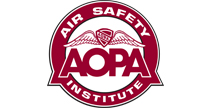What else?
(ERA12LA541)
 By David Jack Kenny
By David Jack Kenny
It’s no secret—as the Air Safety Institute has repeatedly pointed out—that pilots can be their own worst enemies. (The National Transportation Safety Board has had a few words to say on the subject, too, putting general aviation safety on its 10 Most Wanted list for two consecutive years.) About three-quarters of all GA accidents arise from some combination of poor judgment, carelessness, and lack of skill. Most of these lapses are at least somewhat understandable. Once in a while, though, someone does so many things wrong on a single flight—often a very short flight—that even the clinical description in the NTSB’s official report leaves readers open-mouthed with amazement.
Consider, for example, the wreck of an amateur-built Safari helicopter near McVeytown, Pa., on Sept. 1, 2012. The helicopter’s 61-year-old owner kept the aircraft in a hangar on his father’s farm; before taking off, he told his father that he planned to “make a couple of laps” around an open field before flying to a nearby airport to refuel. He also told his father that he’d checked the fuel level and seen “about 5½ inches,” down around an inch from the previous flight. (The Safari’s tanks are barrel-shaped, so below half-full each inch holds less than the inch above it.)
Related Links
“Money in the Bank” Hover Power article
“Stored Energy” Hover Power article
“Gas Pains” Safety Pilot article
“Low Fuel” Hover Power article
His father did not watch the flight, but another witness saw the helicopter lift off, do two 180-degree turns, and then fall to the ground. The record contains no estimate of its altitude prior to the crash, but the impact killed the pilot. An FAA inspector found that the only ground scar was directly beneath the wreckage, indicating that it had made a vertical descent with little or no forward motion, while the condition of the main and tail rotor blades suggested it hit with “low or minimal” rotor RPM; only one blade of each was damaged. Both the main and tail rotor control systems were intact, both transmissions turned freely, and the tail rotor drive shaft showed only impact damage. The engine was in good operating condition, but the right fuel tank was empty, while the left contained about one quart.
The NTSB concluded that the Safari’s engine lost power due to fuel exhaustion (though the factual report notes that fuel was found in the carburetor). The low altitude made it crucial for the pilot to enter autorotation immediately. Unfortunately, there’s no evidence that he actually knew how to do that. Not only did he not hold a pilot’s certificate for any category of aircraft, but he had almost no formal instruction in flying the Safari or any other helicopter. His wife located a logbook showing that in 2010 he’d taken an introductory flight and two lessons in a Robinson R22 for a total logged time of 3.2 hours. Autorotation was not listed among the topics covered. Between purchasing the helicopter in March 2012 and taking delivery in May, he’d also flown about 15 hours with the owner of CHR, the company that makes the Safari kits; they’d brokered the sale on behalf of the first owner’s widow. Those flights were limited to practice taking off, hovering, and landing again, never climbing higher than about two feet, and because the owner was not a flight instructor, did not qualify as dual instruction.
After those demonstration flights, some preventive maintenance, and an annual condition inspection, the helicopter was loaded onto a trailer and trucked from Florida to Pennsylvania. CHR’s owner warned the pilot not to fly it without an instructor, and above all not to lift it more than two feet off the ground without appropriate training. This message seems to have been ignored. According to the pilot’s wife, he first flew the Safari on July 4, and had done so “about every other weekend” since. There is no record that he ever got or even sought formal instruction, so perhaps it’s not surprising that in four months of ownership he never registered the aircraft with the FAA.
Based on this record, the NTSB surmised that he “almost certainly was not proficient in performing autorotations.” That seems like an understatement. It’s possible that he didn’t know what an autorotation was, much less how to do one, or understood the hazards of operating in the black corner of the height-velocity diagram.
Depending on your view of homebuilts (or helicopters), just flying an amateur-built helicopter might strike you as pretty daring. Flying an unregistered homebuilt rotorcraft without benefit of any instruction in flight planning, performance calculations, or emergency procedures is out there on the edge. Doing so without knowing how to estimate either fuel requirements or fuel on board—while casually planning a five- or 10-mile hop to refuel—entrusts so many crucial elements to fate that, short of taking off into a thunderstorm or low IMC, it’s hard to imagine what else one pilot could possibly have left to chance.